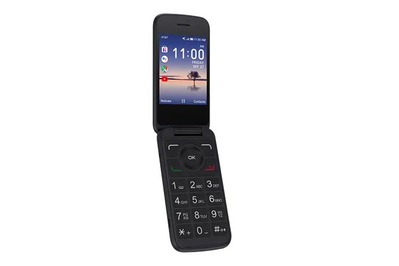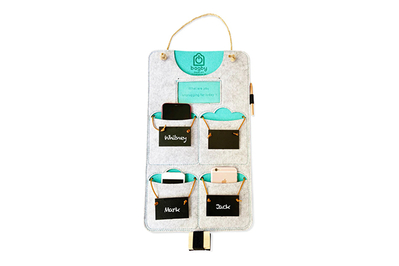
Ask Wirecutter: Can You Help Me Stop Mindlessly Scrolling on My Phone?
Welcome to Ask Wirecutter, where deputy editor Annemarie Conte helps you figure out how to make the most of your stuff in real life. If you have a shopping conundrum for our advice columnist, submit it using this form.
Dear Wirecutter,
My husband’s cell phone addiction is out of control. And my late-night social media habit isn’t so great, either. Can you help us stop mindlessly scrolling?
S.S.
Dear S.S.,
It’s good that you recognize that the pendulum has swung too far in the direction of unlimited screen time and want to take steps to adjust it. I regularly joke about wanting to throw my phone into the ocean, but going cold turkey and cutting off all communication is not a rational, reality-based decision.
Before it gets to that point, we have a few options for you to consider, especially if your spouse is a little more reluctant to make changes. With a bit of focus, you’ll both be able to fit your phones into your lives (not the other way around).
Make your smartphone less smart
Android and iOS developers know that people need help with boundary setting, and there are clever ways to make your smartphone a little dumber. Turning on grayscale so that you’re not pulled in by all of the pretty colors while turning off your phone’s volume and vibration can help make it less enticing.
You can also block yourself. Android and Apple phones both offer ways to manage screen time, built into the settings menus of their software. Both Android’s Digital Wellbeing feature and Apple’s Screen Time allow you to set time limits on specific apps, set reminders for scheduled downtime to take breaks, and send you daily or weekly reports on how much you use your phone (and which apps you use most) that might just shame you into using it less.
If you have an iPhone, you can also set up a custom Focus mode that silences notifications from specific apps so that you don’t feel compelled to read and respond to them.
Wirecutter senior staff writer Elissa Sanci tested the Opal app for an article on breaking up with your phone and still uses it daily. Opal restricts your access to certain apps during specific windows of time that you set for yourself. “I disconnect completely from social media during the workday, but you can also set blocking sessions around bedtime so you don’t doom-scroll until you fall asleep,” she says.
If your husband isn’t quite ready to admit that he has a problem, start by implementing some of these ideas for yourself so that you can excitedly update him on your progress and how much better you’re feeling since you now have time for more jigsaw puzzling, Peloton-riding, letter writing, or whatever your hobby of choice is.
If you want a basic phone that doesn’t do much besides making calls, the Alcatel SmartFlip is cheap, reliable, and easy to use.
This phone is good for older adults who prioritize simplicity, value, and a choice of calling plans. It’s also good for those who prefer a phone with larger buttons.
Buying Options
Switch to a dumb phone
I have spent more time than is reasonable thinking about my Motorola StarTAC from the early 2000s (man, that thing felt indestructible). But returning to the flip-phone era doesn’t just have to be a nostalgic fantasy.
New York Times technology writer Kashmir Hill instituted a self-imposed smartphone detox by switching from an iPhone to a flip phone for a month. She reports that the results were largely positive for her (richer social interactions!), and she’s now advocating that everyone try it for her follow-on to Dry January: Flip Phone February. Readers who have tried it for themselves have also seen some really positive results.
Of course, it doesn't have to be February for you to try it out, and you can ditch your phone any time. But here’s where I have to acknowledge that a full-time flip to a dumb phone is a big commitment, as Kashmir learned during her detox. We live in an app-driven world, especially if you own any connected devices, from appliances to smart-home devices.
And if you have a corporate job, you may need a phone to actually do your work (though being able to do work on one’s phone is a double-edged sword). If not having your phone's camera at the ready at all times makes your nervous, you can take a page from Gen Z and carry a point-and-shoot camera.
If a full-time switch is too impractical for you, consider the idea of a smartphone for your workday paired with a non-smart phone for evenings and weekends. Non-smart phones are relatively inexpensive for the device plus a monthly talk and text plan, and you can consider it an investment in some phone-life balance.
I get that having two phones may seem like overkill, but if physically separating from a smartphone’s distractions is the only way to create the balance you’re looking for, you may find that it’s worth the effort.
We have two Wirecutter picks. Our choice for older adults or anyone who prefers large buttons and a large screen (and who doesn’t?) is the Snapfon ez4G, a candy-bar-style phone that also includes Wi-Fi calling capability and an LED flashlight. The all-in cost is around $350 for the phone and a year’s worth of unlimited talk and text service through Snapfon. You can read more about it in our guide.
The Alcatel SmartFlip is another inexpensive option. The phone itself costs about the same as a Smoocho Sip + All You Can Eat Boneless Wings, Riblets & Shrimp dinner for two at Applebee’s, it runs on most major carrier networks, and it’s less likely to give you indigestion or a wicked headache. The monthly charges vary by carrier, but Verizon, for example, has a talk and text plan that’s $15 per month before taxes and fees. Our guide to the best phones for kids has more details on the Alcatel SmartFlip if you think it will work for you.
Set up a smartphone jail
My colleague Elissa spent weeks trying all manner of tricks to break up with her smartphone—from rubber bands to countdown lockboxes. She employed those various methods at times when she needed uninterrupted concentration, as well as for general life-balance situations, such as not jumping to check her phone the minute she woke up in the morning.
Keeping your phone out of the bedroom at night helps to reduce pre-bed rabbit holes, and banning your phone from the bedroom entirely is a common recommendation. Doing so may require getting a real alarm clock or a smart-home device that uses a voice assistant so you don’t have an excuse to put your phone at your bedside to wake you up in the mornings. A landline for emergency calls can also be helpful for peace of mind.
“Physically removing my phone from my line of sight ended up being the most effective way to keep myself from wasting hours on social media. Now, my room is a designated no-phone space,” Elissa says.
During the workday, she keeps her phone tucked away in a Bagby Original, a phone-size pouch designed to hang from a doorknob. There’s also the Bagby Social, which has slots for multiple devices; it’s great for larger households or for parties where what happens at the party, stays at the party.
This article was edited by Caitlin McGarry and Jason Chen.
Mentioned above
- Whether you prefer iPhones or Android, we have smartphone recommendations for every budget.The Best Smartphones
- Your phone knows how to pull you in. Here’s how to reclaim your attention span.Everything You Need to Break Up With Your Phone, From Free Tricks to Phone Safes
- The Peloton Bike and Bike+ offer live and on-demand at-home classes for a monthly membership fee. We review both.Peloton Bike Review: What to Know Before You Buy
- The Uni-ball Jetstream RT is the best pen for most people. It’s affordable and quick to dry. And it writes smoothly and won’t skip or bleed.The Best Pen
- Picking a cell plan can be confusing, but after months of research, we’ve found the best plans for data, coverage, and price.The Best Cell Phone Plans
- From top-tier smartphones to basic models, these phones offer safety, health, and accessibility features that many older adults and caregivers will appreciate.The Best Cell Phones for Older Adults


